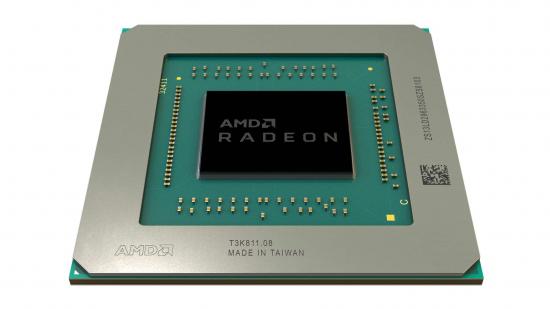The next generation of the best graphics cards should soon be with us, those both from Nvidia and from AMD. On the Nvidia front, there’s a rumour (via Wccftech) that the RTX 3080 will be up to 35% faster than the RTX 2080 Ti. Now, on the AMD front, there’s yet another rumour that the RDNA 2 ‘Big Navi’ GPU will have 80 CUs (compute units).
This rumour comes from Twitter users Rogame and Komachi Ensaka, with the former outlining the supposed configuration of ‘Sienna Cichlid’ – aka ‘Navi 21’, aka ‘Big Navi’, aka the ‘Nvidia killer’ – and the latter posting an enigmatic equation: “10 (20)*4 : 80”.
‘Sienne Cichlid’ was believed to refer to Navi 21 ever since we first saw the GPU codename appear in some Linux patches. We’ve also heard the 80 CU rumour before – the original 80 CU rumours were part of the reason Big Navi originally received such hype and expectation. That the rumour has come around again (apparently from different sources) is promising, though, considering how close we’re getting to seeing these next-gen GPUs in the flesh.
Rogame lists Navi 21’s “four shader engines”, “two shader arrays per shader engine”, “five workgroup processors / 10 CUs per shader array”, and “four render backends per shader engine”. But we don’t need to get too bogged down in all these details and all this *gulps* maths. The important thing is that this GPU configuration, if correct, should give us 80 CUs total “as a max config”.
[Sienna Cichlid / Navi21] 🧐
> 4 Shader Engines
> 2 Shader Arrays per Shader Engine
> 5 WGPs / 10 CUs per Shader Array
> 4 RBs per Shader Engine80CU total as a max config pic.twitter.com/LsDcfa0vF1
— _rogame (@_rogame) July 31, 2020
CUs are essentially the GPU’s ‘cores’ – how many you have should directly correlate to performance relative to other GPUs on the same architecture. To give this some context, the current best AMD card, the RX 5700 XT, has ‘only’ 40 CUs – and these 40 CUs manage to push out fantastic frame rates at any resolution, losing out only to the very top-end of Nvidia’s graphics card lineup (the RTX 2070 Super, RTX 2080, RTX 2080 Super, and RTX 2080 Ti).
Do note, however, that this is supposedly a maximum configuration, meaning even if the rumour is true we might not see next-gen AMD GPUs maxing out on this potential and giving us 80 CUs and 5,120 SPs (streaming processors) with 64 SPs per CU. And we don’t yet know what either Nvidia Ampere or AMD RDNA 2 architectures will hold for performance, so straight-up CU comparisons remain speculative at best. But with next-gen consoles set to utilise AMD RDNA 2 GPUs, we can be sure they’ll be no slouches. If AMD does give us a high-end GPU that doubles the CU count of the 5700 XT on a new and improved architecture, we can be pretty confident it’ll impress.
When asked about the issue, AMD has told us that it does not comment on rumour or speculation.
